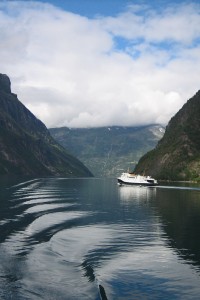 So here we go with the seventh of my monthly science round-ups. As I have said before these are not in any order of importance, nor are the necessarily ‘important’ just because I have included them. They are simply those things that have caught my eye, tweaked my interest and imagination as I’ve scanned the newsfeeds I follow, or have dropped into my ‘interest’ box in Hootsuite (an excellent way to organise your twitter feed if you haven’t tried it)
So here we go with the seventh of my monthly science round-ups. As I have said before these are not in any order of importance, nor are the necessarily ‘important’ just because I have included them. They are simply those things that have caught my eye, tweaked my interest and imagination as I’ve scanned the newsfeeds I follow, or have dropped into my ‘interest’ box in Hootsuite (an excellent way to organise your twitter feed if you haven’t tried it)
Down to earth:
A breakthrough in creating power from nuclear fusion.
For as long as I can remember nuclear fusion has been held out as the answer to all our power generation problems. An endless source of clean energy with no radioactive waste, no CO2 emissions or turbines to blot that landscape. Apparently while we understand the principle of nuclear fusion it has been difficult to predict how the hot gas involved will behave. Now scientists at MIT and other universities believe they have, using computer modelling, worked out how to predict this turbulence. With this mystery solved, researchers can better understand how the plasma reacts and then start working on fundamental ways to combat it. Fingers crossed.
The secret to staying young
This is something that becomes more interesting the older you get. A study, published in Nature, raises hopes that anti-aging treatment will be possible. The researchers increased the lifespan of mice by 25% by deleting “senescent” cells, dysfunctional cells which increase as we age and cause damage to tissue. Senescent cells are formed within cell populations that divide during life. However, after a variable degree of replication, cells stop dividing and enter this senescent state. What’s more the mice in this study lived longer because they were healthier, which is what we all want i.e. if we are going to live longer we want that life to be a healthy one.
Up in space:
What’s happening during 2016
Mars – the curiosity rover will make its way to the 5.5km high mountain called Mount Sharp and its iron oxide rich layer where it will drill and analyse what it finds to discover more about Mars’s wet and warm past
The moon – The European Space Agency are planning a collaboration with Russia to start a new lunar exploration program this year. Also a US company Astrobotic Technology hopes to be the first private lunar lander and rover mission in 2016.
Outer Solar system – The Juno space craft reaches Jupiter in July and the Cassini mission will orbit between Saturn and it’s rings, flying past the moons Titan and Enceladus before its (planned) crash into Saturn in 2017.
 For more on these missions follow this link
For more on these missions follow this link
How to build a starship and why we should start thinking about it now.
As a science fiction writer I was naturally attracted to this article on Deepstuff.org. To reach a nearby star in decades rather than millennia, a spacecraft would have to travel at about 10% of the speed of light (the Voyager probes are travelling at about 0.005%). Apparently such speeds are possible in principle and we wouldn’t have to invent new physics such as the fabled “warp drive.” There are a number of possible propulsion mechanisms we could be working on, light sails, antimatter engines, interstellar fusion powered ramjets. The front runner at the moment is a nuclear-fusion rocket concept which goes back to the late 1970s. This would be capable of accelerating a 450 tonne payload to about 12% of the speed of light, getting us to the nearest star in about 36 years. And if we are all going to be living longer (see above) the stars here we come. But according to the scientists we need to start now if we’re going to have something by the middle of the 22nd century. As luck would have it the same timing as in my book Project Noah!
And finally: What would happen if the earth fell into a black hole.
The answer, and not just for the earth, apparently is spaghettification. And yes it is a word, or at least a word invented by scientists. If it was you that strayed too close to a black hole this would be the effect caused by a gravitation gradient across your body. i.e. Since your feet are closer to the black hole, they will feel a stronger gravitation pull towards it than your head. Worse is that, your arms, because they’re not at the centre of your body, will be attracted in a slightly different direction than your head is and will be brought inwards. The result is not only an elongation of the body, but also a thinning out (or compression) in the middle, hence looking like spaghetti. The same would be true of anything getting too close to black hole, including the earth.

I’ll stay away from those black holes then. I wonder how long before we get the anti-aging drug. I imagine the line will be pretty long for that one. Fascinating stuff Ian!
Thanks and yes, I’m crossing off ‘visit black hole’ from my bucket list as well